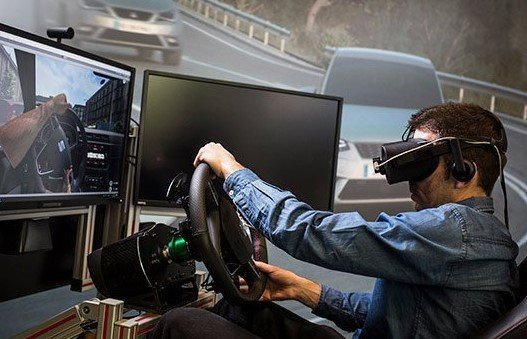Universities in England are using virtual reality to help autistic people build driving skills and overcome anxiety. This new project from the University of Bath and University of Exeter aims to make driving more accessible through tech simulations, starting just weeks ago and showing early promise in boosting independence.
Breaking Down Barriers with Virtual Reality
Autistic individuals often face unique challenges when learning to drive, such as high anxiety levels and sensory sensitivities. The two-year research project focuses on extended reality tools, which include virtual and augmented reality, to create safe practice environments.
Experts involved say these simulations let users experience real-world driving scenarios without the risks of actual roads. They can practice handling traffic, junctions, and unexpected events in a controlled setting.
The project builds on past studies that showed virtual reality can improve driving performance for those with autism spectrum disorder. Researchers are testing if using the tech before or after traditional lessons works best.
One key goal is to promote independence. Driving opens up job opportunities, social connections, and daily freedom for many autistic adults.

Personal Experiences from Participants
Sophy Tyler, a 29-year-old from Bath, passed her driving test at 21 but struggled with confidence to drive alone. She described the fear of going solo without an instructor as overwhelming.
Now part of the project, Tyler uses virtual reality simulators to rebuild her skills. She sits in a gaming-style chair with a mock steering wheel, facing a large screen that mimics real roads.
Maisie Hughes, 19, from Gloucestershire, has delayed starting lessons due to anxiety. She believes this tech could change that by offering a low-pressure way to learn.
These stories highlight a common issue: many autistic people avoid driving due to social interactions with instructors or sensory overload from traffic noises and lights.
Dr. Tom Arthur, leading the research from the University of Exeter, notes that the project targets these exact barriers. Participants report feeling more prepared after sessions.
Professor Mark Brosnan from the University of Bath adds that interacting with others, like reading signals at junctions, can be tough. The tech helps users practice these skills at home.
How the Technology Works
The simulators create immersive driving experiences using headsets and controls that feel like a real car. Users navigate virtual cities, highways, and rural roads, facing challenges like bad weather or heavy traffic.
Developers are customizing scenarios for autistic users, such as reducing sensory inputs or adding gradual difficulty levels. This personalization makes learning more effective.
Early trials show users improve in decision-making and reaction times. For example, one setup includes a talking guide to explain road rules without the stress of a live instructor.
Here are some key features of these VR driving tools:
- Customizable difficulty to match user comfort.
- Real-time feedback on mistakes to learn quickly.
- Safe space to repeat scenarios without real-world consequences.
- Integration with augmented reality for mixed real and virtual practice.
Researchers plan to expand the project by partnering with driving schools. They aim to make the tech affordable and available for home use.
Benefits and Potential Impact
Virtual reality offers clear advantages over traditional driving lessons for autistic learners. It reduces anxiety by allowing practice in familiar settings, leading to higher confidence levels.
Studies from recent years back this up. For instance, similar programs in the US have helped teens with autism improve their driving by up to 30 percent in simulated tests.
Beyond driving, this tech could apply to other skills, like job training or social interactions. It ties into broader trends where virtual reality aids neurodiverse individuals in daily life.
However, challenges remain. Not everyone has access to high-end VR equipment, and some may find the immersion overwhelming at first.
To address costs, the project explores mobile apps and cheaper headsets. Experts predict wider adoption as tech prices drop.
| Aspect | Traditional Driving Lessons | VR Simulation Training |
|---|---|---|
| Anxiety Level | High due to real roads and instructors | Low in controlled home environment |
| Cost | Expensive with repeated lessons | Potentially lower with reusable tech |
| Customization | Limited to instructor’s style | Highly tailored to individual needs |
| Practice Flexibility | Scheduled and location-based | Anytime, anywhere access |
| Safety | Real risks on roads | Zero physical danger |
This table shows why VR could transform driving education for autistic people.
Looking Ahead to Wider Use
As the project progresses, researchers will gather data from more participants to refine the technology. They hope to publish findings by late 2026, influencing driving programs worldwide.
Similar initiatives in places like Vanderbilt University have already succeeded, with autistic teens gaining independence through VR driving games.
This research aligns with growing awareness of neurodiversity in 2025, where tools like these empower autistic individuals in everyday tasks.
If you found this article helpful, share it with others who might benefit and leave a comment below on your thoughts about VR in education.








